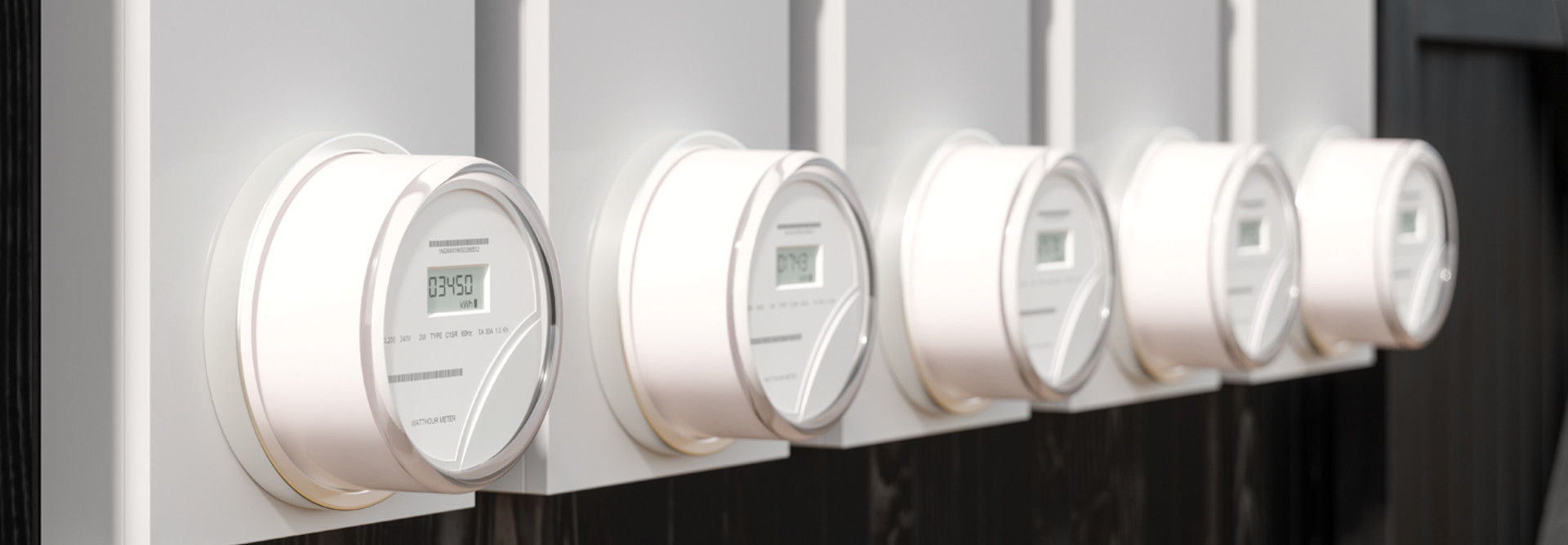What Is Smart Meter Technology?
Smart meters provide utilities with accurate, real-time monitoring of energy or water consumption. The data from smart meters is often transmitted via a variety of wireless networks. Using this real-time data, utilities can monitor usage and detect anomalies, leading to efficiencies and cost savings.
In addition to power outages, smart meters can help utilities reduce water usage and maintenance costs, according to Sielen Namdar, global water business lead at Cisco, which offers solutions to help cities move data from meters to the platform level using connectivity such as long-range (LoRa) wireless technology.
“You’re able to figure out where the leaks are and really be more proactive about finding those anomalies in your distribution system to fix them before losing millions of gallons of water over time,” Namdar says. “These are very feet-on-the-ground problems now; it sometimes may take years before you can even know a pipe has been leaking in a certain place.”
Smart water meter use may also help facilitate conservation efforts.
“People will be able to have this visibility into their account usage and manage their water footprint,” Namdar says.
Communities could potentially use smart meter-produced data to help plan ahead for future utility-oriented service needs, such as electricity usage.
“Thinking about the way they move electricity around in a city allows them to build additional capacity in certain places,” Rainwater says. “In many ways, that creates a much more efficient system, and they can scale up on a regional basis.”
What Is the Difference Between a Smart Meter and a Regular Meter?
There are many differences between smart meters and regular electric or water meters. With regular meters, a utility company employee needs to come out to a specific location every month to read the meter; smart meters transmit data to utilities on their own at regular intervals.
With regular meters, utility employees need to analyze data over a long period of time to detect anomalies. Smart meters enable that detection in real time.
Smart meters enable consumers to track their usage in real time and detect their usage patterns. For example, they can see how much energy their house consumes while the house is empty, and then figure out ways to lower that usage by turning off lights or appliances.
Utilities have been turning to smart meters to figure out ways to better serve customers and to save costs. In general, smart meters enable utilities to conduct more aspects of management and monitoring remotely, saving time and money.
READ MORE: Find out how smart cities can use data effectively.
What Are the Benefits of Smart Meters?
Many utilities that made the switch experienced the benefits firsthand. Other utilities are making the switch now. In Ohio, the Akron Water Supply Bureau has used a drive-by automated meter reading system to collect usage information from residents’ water meters roughly every 27 to 32 days since 2003, according to Water Meter Supervisor Jerome McCall.
Following a pilot involving 225 customers, the city is currently in the process of implementing a smart meter-based advanced metering infrastructure system, with smart meter components that include transmitters and collector stations. Akron aims to complete the work by 2022, but McCall says the work may be delayed due to the coronavirus pandemic.
Data will be conveyed every hour, McCall says — more often than in the past — via radio frequency technology, which will help detect leaks and enhance billing practices. Currently, Akron bills customers for water each month in increments of 100 cubic feet; adjustments are made on the following bill.
“That creates some inconsistencies because some of our users are over or under by a cubic foot, and the next bill can be almost double,” McCall says. “The new system allows for more of a chance to observe the measurements. During the pilot, we were able to work with some bigger users like our malls; the transparency of the water usage on a daily and hourly basis helped them chase down different abnormalities in their system.”
Some cities have encouraged smart water meter installations with incentives instead of directly providing the meters for residents.
Santa Fe, N.M., and Austin, Texas, for instance, have offered homeowners and businesses rebates for adding Phyn smart water assistant devices, such as the Phyn Plus Smart Water Assistant, a sensor-based product launched in 2018 that, once professionally installed on a home’s main water line, can convey leak alerts via 2.4-gigahertz Wi-Fi.
Phyn’s products use artificial intelligence and machine learning to assess typical water use and associated changes in pressure to identify deviations. End users can view information through an app or enterprise dashboard, and water capabilities can automatically be shut off if concerns arise.
A year after installation, implementation data has shown that some properties experienced water savings of 20 to 30 percent, according to Mariel Devesa, Phyn global head of business development.
“We’ve spoken with some municipalities that are looking at giving the devices away to all customers because they see the benefit of what can happen,” Devesa says. “Some are using them as part of a piloting program, trying to quantify what the savings are. The technology can sometimes mitigate losses, not only for direct cost savings but also on the water conservation side.”
MORE FROM STATETECH: Find out how to protect your utility from a cyberattack.
Can Smart Meters Be Hacked?
Some cities may hesitate to add smart water, electricity and other meters for a few reasons, including security concerns.
Implementing a secondary, IoT-enabled meter-type network can increase the chance utilities’ systems might be compromised, according to Namdar.
“There are many more points of vulnerability when you open up and connect the systems; they’re no longer air-gapped by design to protect them,” she says. “A cybersecurity breach can really impact people’s health, the community, the environment; if someone hacks into a water treatment plant, the consequences could be catastrophic. That’s why it’s important to have a thorough security protocol.”
As with many technology-based city programs, privacy can be a concern in smart meter implementations, Rainwater says.
“When meters are in the home, it gets at a larger conversation about digital rules and privacy concerns,” he says. “Cities are very aware of these concerns and have taken steps to make sure privacy is maintained and there is transparency on how data is being collected and utilized.”
Despite any perceived potential data management risks, Rainwater predicts smart meter use will increase even more in the future, due in part to the social distancing and remote work standards numerous municipalities have introduced.
“We’re going to see the pace continue over the coming years to where smart meters are the standard metering devices people have at homes because of the benefits they bring,” Rainwater says. “It provides real-time data for utilities that’s useful, and the ability to do things more remotely when they used to have numerous employees handling that. That’s an interesting use case in the current world of coronavirus.”
Strained post-COVID-19 budgets may also influence decision-makers, according to Namdar.
“Utilities realize they have to do more with less,” she says. “When utilities invest in advanced metering infrastructure systems, they reap the benefits very quickly and will start saving money moving forward because it’s an automated system, so it’s a less staff-intensive effort. They’ll collect the right amount from customers. ROI and revenue start to tick upward; it’s one of the lowest-hanging fruits among all water use cases.”
READ MORE: Discover how Cary, N.C., uses smart water meter technology.











